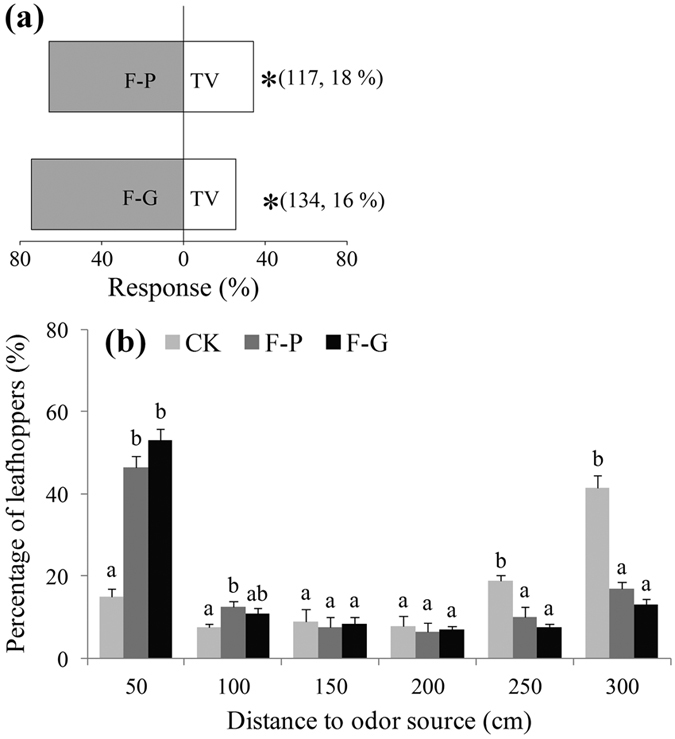Figure 3.

Behavioural responses of Empoasca onukii adults in Y-tube (a) and wind tunnel (b) bioassays to two attractants (F-P and F-G; for composition, see Table 1). In Y-tube bioassay, TV denotes tea plant volatiles, and asterisks denote significant difference in attractiveness (χ2 goodness-of-fit test: P < 0.0001). Numbers in parentheses indicate numbers of tested leafhoppers followed by frequency (%) of non-responding individuals. In wind tunnel test, percentages of leafhoppers (%, mean + SE) at different distances from odour source were compared among different treatments. In blank control (CK), rubber septa were loaded with liquid paraffin. Each treatment was tested five times. Different letters on bars indicate significant differences (one-way ANOVA, followed by Tukey’s multiple comparison test, P < 0.05).
